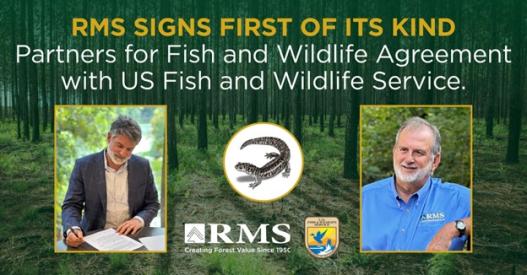January 2024 Edition | Volume 78, Issue 1
Published since 1946
Necessity is the Mother of Invention: The Need for Simpler Tools to Protect Species
"Necessity is the mother of invention," as Plato famously wrote. This timeless proverb resonates deeply in the realm of environmental conservation, especially when discussing the Endangered Species Act (ESA) and its innovative approach to protecting imperiled species and their ecosystems. The ESA's regulatory assurance is a suite of measures designed to encourage voluntary collaborative conservation efforts for at-risk, threatened, and endangered species. These measures, known as Landowner Assurance Tools (LATs), offer incentives to private landowners and developers, balancing conservation actions with minimized regulatory burdens.

One of the key LATs is the Habitat Conservation Plan (HCP), a comprehensive strategy developed in consultation with the U.S. Fish and Wildlife Service (USFWS). HCPs focus on habitat management while accommodating certain land-use activities, fostering private sector participation in conservation. Similarly, Safe Harbor Agreements (SHAs) and Candidate Conservation Agreements with Assurances (CCAAs) offer landowners regulatory relief in exchange for their proactive efforts to improve habitat conditions. All LATs operate under the "No Surprises" policy, ensuring that landowners adhering to agreed terms face no additional requirements, even if circumstances change unexpectedly. This policy is crucial in striking a balance between species conservation and the interests of landowners and businesses. However, these tools are not without limitations. Their development can be time-consuming and resource-intensive, often sidelining limited-resource and minority landowners. This gap in accessibility is a significant concern, as it can exclude those who might otherwise contribute to conservation efforts.
Addressing this challenge in 2006, Congress passed and the President signed the Partners for Fish and Wildlife Act, creating an additional pathway for more inclusive and efficient conservation. This Act empowers USFWS to partner with private landowners in habitat restoration and enhancement projects, using simple Cooperative Agreements to streamline the process. These agreements, treated as "federal actions," trigger the "Section 7" consultation process under the ESA, offering similar assurances as Section 10 but with less regulatory burden to the landowner. This innovative approach, blending existing authorities in new ways, has the potential to revolutionize conservation efforts. It simplifies the process for landowners, making participation more feasible for a diverse range of stakeholders. By reducing barriers to entry, this approach can accelerate collaborative conservation, benefiting countless at-risk and listed species across the nation. Just recently, this model was successfully used by an agreement between a forest resource management company and the USFWS. Learn more about how Partners for Fish and Wildlife program is being used to recover listed species.
As we look to the future of environmental stewardship, the conservation of fish and wildlife and keeping working lands working, it's clear that innovation is key. By adapting our strategies and broadening participation, we can create a more inclusive and effective framework for conservation, truly embodying the spirit of "Necessity is the mother of invention."